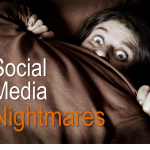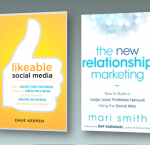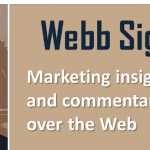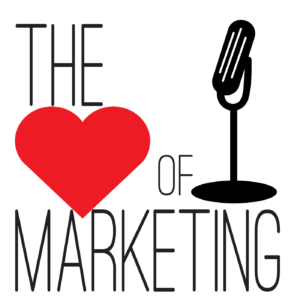It is like being in the Twilight Zone.
You’re sequestered in a room with a half-dozen other business smarties toiling away at one of the toughest, most frustrating assignments you’ve faced in a long time. You’ve been tasked with describing your entire company in short sound bites that define your business.
It should be simple enough, right?
But no one can agree what should go into the message. You’re stuck in one of the great marketing paradoxes: the closer you are to your business, the harder it is to boil your message down into simple talking points. It’s looking more and more like an exercise in futility.
Then suddenly everything changes.
In walks a message mapping master and the energy in the room rebounds. The master leads you through a method that literally produces a cascade of ideas. The ideas flow into a one-page map that diagrams all your key messages.
Now you see all the ways this map will lead you to success:
- It helps you maintain consistent messages across your organization
- It aligns your overall brand strategy
- It brings focus to your marketing communications
- It enables advanced planning for threats or disruptions to your business
- It helps you develop messages for different customer segments
- It prepares you for rapid-response communications in real time
“Who was that message mapping master?” you wonder. “How can we learn her secrets?”
The answer to that question is simple. Just listen to this episode of The Heart of Marketing podcast. This time I interview my cohost Jayme Soulati, AKA The Message Mapping Master. She takes us through a lively introduction to message mapping and how it uncovers the hidden gems in your organization that you can turn into brand message zingers for public relations and all your marketing communications.
Along the way we also discuss:
- What exactly is a message map
- What are the business benefits to message mapping
- How do you create a message map for your organization
- Why a lawyer just may be your best champion for message mapping
- How message mapping caused one senior team to change their business model
- What is the biggest stumbling block for CEOs to accept message mapping
- How narrowing your corporate focus can bring you more business
- And more
005: Message Mapping for Fun, Profit & Marketing Awesomeness
Show notes and resources
John: Hi, friends. Thanks for joining us today for another episode of "The Heart of Marketing." I'm John Gregory Olson with my rock-hot co-host Jayme Soulati.
[applause]
Jayme: Hey, hey, hey, John! Oh my gosh!
John: All right, sounds like you've already built up quite a fan base, Jayme.
Jayme: People love me. And I love you too at the "Heart of Marketing." I'm so excited.
John: Yes, so how's it going?
Jayme: We're getting through. It is one of those things that you can't complain about in my neck of the woods because it's been a sunny January and I know we are in February now and we've had no snow to speak of. My friends in the northeast though are getting pummelled and how's Minnesota?
John: Oh, we've been really fortunate this winter, very little snow at all. We've had some really nice balmy weather in the last week. And even this week it's a little cooler, but cannot complain. I was just telling Betty, my wife, the other day was February 1st and I said, "Wow, this is great. Sixty more days and we're through the woods and spring will be here. So if we can just survive that, it will be a great, great winter in Minnesota.
Jayme: We're probably going to have one of those late winter storms that... I am expecting it because we've been a little too easy winter for us. Hey John, did you watch the Superbowl?
John: Well, I didn't see too much of it. I was working. But I did have it on the radio.
Jayme: Well good for you, you missed the last two plays of the whole thing, which were two of the most important plays in the history of football, I think.
John: I think so.
Jayme: I was shocked. I'm sure you saw the reruns, but that was so exciting. It came down to the wire. But more exciting to me were the advertisements obviously. People frequently watch the Superbowl because of the ads and I wanted to share my favorites. And John, maybe you have a favorite, maybe you got a chance to look at those a little bit after the game. So, I'm going to jump right in.
John: Go ahead, yes.
Jayme: I want to share a theme here that I see marketers addressing in a B2B marketing and also in consumer advertising as well, B2C. It is human behavior. To cut through the clutter, marketers are more and more trying to appeal to the senses. The "Always" commercial, "Run like a girl, throw like a girl," that one to me resonated amazingly, because gosh it... and the ultra message was that in puberty, girls' confidence wanes. And this "Like a Girl" campaign really resonated with me since I've got a 13-year-old who is incidentally a black belt in Taekwondo. So I don't think her confidence is going to wane, quite the opposite.
John: That helps a lot
Jayme: I got to bring her down a couple of notches actually. So I don't know, did any of the commercials resonate with you, John?
John: Well, I don't really feel like I can talk too much about them because I didn't watch the game on TV. I did see some of the commercials that were on the web, of course. But I think your example is just a perfect lead in to what we are going to be talking about today.
Jayme: Go, what are we talking about?
John: And maybe we can just set that up and run right into it. Because you are talking about the message that they built for the campaign and how powerful that was. And we are going to be talking today about how a message map builds a roadway to customer communication. And we are really fortunate today, folks, to have on the program a message map expert, named Jayme Soulati. And so I will really be interviewing Jayme and letting her speak to this area because it's a really powerful thing and we're going to start out today with some basics. What is a message map? Jayme is going to talk a little bit about that. What are the benefits, the business benefits to developing a message map? Why should you do it? And then at the end, Jayme is going to spend a little bit of time talking about what is the process of a message map. You may never have been exposed to such mapping before. Might be curious to how it works when you are trying to create one. So those are things that we are going to cover in today's episode.
Jayme: Wow.
John: Yeah, so maybe before we jump in though, Jayme, we should talk about our promo for the month of February.
Jayme: I would love to. Why don't you tell everybody what that is. It's so exciting.
John: Well, as you may or may not know, the "Heart of Marketing" podcast is officially launching in February 2015. And it just so happens that February is also Heart Month, sponsored by the American Heart Association. It is a month to create awareness of heart health. And we would like to recognize Heart Month in the month of our launch by running a special promotion where we are going to donate up to $500, a dollar for the first 500 of you who subscribe to the "Heart of Marketing" podcast. We will match a dollar, up to $500. So by your subscribing, you are helping us lend our support to Heart Month and the American Heart Association. So please give that some consideration. If you are listening to this and it is getting to be the end of February, click on that subscribe button or tap it on your phone and help us to do that.
Jayme: I love it.
John: Did I forget anything Jayme?
Jayme: I think you are the king of segue and you are amazing.
John: Wow, thank you. All right let's get right into it, Jayme. What is message mapping?
Jayme: That is such a loaded question because nobody knows. It's a secret.
John: I know.
Jayme: Back in the day, a year ago as a matter of fact, which is back in the day by Internet standards, I was encouraged very, very hard to rebrand myself as a message mapping master. And the word "master" was the only one I could accept that wasn't so frivolous and so embarrassing, right? A message mapping guru, maven, whatever-
John: Oh, yeah.
Jayme: All these crazy words. But, message mapping was born in media relations, in my world of PR, in the agency world, in Chicago where I was born. And when company spokespeople were in front of a journalist who is doing a story, we had to prepare them with a message map. And the outcome of the exercise — which is pretty intense actually — the outcome of the exercise happens to be one PowerPoint slide. And it is a series of squares and bubbles and colors and arrows and little supporting messages and primary messages and secondary messages. When you're done with the exercise, you get this wonderful map that helps you really navigate your messaging for your company. And people get confused, marketers get confused about my process versus their's because while there is a blend right now between PR and marketing, the message mapping process I go through is quite a bit different than the marketing process of messaging. And I am very oriented to external messages; how a company communicates to its audiences. And there is a variety of audiences but...
John: Excuse me, Jayme, would you say that the message map is a more visual tool when you're all done with the process? That it's a visual representation of your message more so than in other planning tools?
Jayme: That's a good question. I think if you're oriented to a mind map and you do mind maps for what you do in your daily life, it's similar. It's very different looking than a mind map, but yes it's very visual.
John: That's one thing that I noticed when I was looking into this to prepare for this show. From the different tools that I have used in the past for planning, that this seems to be much more of a visual quick look at, here's the path of our message.
Jayme: Yes. So if you are looking at a piece of paper right now and I had something about your customers — how you want to promote a product to your customers — we would have a linear progression in a very vertical fashion going down, where we drill in deeper and deeper with every message bucket. We would support a major tag or a major message about a customer and then drill in deeper. And give that spokesperson all the documentation, all the bullets, all the messaging they needed to communicate about that topic of customer. A little confusing, I think, when I just said that but let's just simplify what a message map is. It helps you communicate, amplify your product's services, history, expertise, authority to the marketplace. And when you get executives, leaders of a company, into a room to start a message mapping exercise, hidden gems are uncovered. And I find it every single time. It's a really wonderful practice.
John: I would imagine that when you are working with a client, that they are so close to their business and they are so close to their product, that they don't necessarily see these things. And that going through the mapping process can help bring them to the surface.
Jayme: Well, that's exactly true. So often what I have found is... how many of these have I done, goodness. I'm sure I've done 50. Fifty of these exercises over the course of my time and that doesn't sound like a lot maybe to some people but when you think about the intensity of these exercises, that is a lot. And they are from all sectors, all sectors of company and all sizes, from entrepreneurs and solos, to large corporations that are broken down by business units, to mid-tier companies and startups. A lot of startups really benefit from a message mapping exercise and I have actually seen their business model change as a result of a message mapping exercise.
John: Well you know what, that is a nice transition into the next thing that we want to talk about, which is what are all of the benefits to your business of doing this? I'm sure that the business leaders and marketers are wondering, "What's in it for me? Why would I want to go through this exercise?" So why don't you expand on that a little bit?
Jayme: Sure, of course. Message mapping happens to be a song sheet. When you are done with the working document, because it never changes, it's always tweakable, you can look at that document, pass it around to your executive leadership team, your C-suite. And these are the messages that they are all going to use together. If they are writing a speech, if they are out fundraising, if they are out talking to a board of directors, this message map guides people and a company to be on the same page with key words and approved corporate messages.
John: So consistency is a biggie ...
Jayme: It is huge. I mean, it's huge. When you imagine just all the avenues of communication available to a company today, imagine if you are the agency you hire, or the consultant you hire, or the kid out of school, your intern, who's writing your social media posts. Imagine if they don't know the approved messaging. Imagine if your website isn't written with approved messaging. And all these channels of communication, of owned media and shared media have different focal points, well, then it's just hodgepodge at nothing. I mean, you don't have any consistency. So your brand message is empowered by a message mapping session. Your personality shines through when you do a message mapping session, too. And I'll tell you what, the most recent one I just did, John, it's done but I can probably keep going with that message mapping session and I think the reason why is because there's confusion within the company about what they do.
John: Okay, sure. Right. Very common.
Jayme: Yes. And I think that if it's a younger company, this is such an important exercise. Because you get the CEO or the entrepreneur or the founder together in a room with the rest of the team and everyone is able to hear one another. And pretty much the reason why a facilitator like me is useful for a company in this exercise, I'm not afraid to point a finger at someone and say, "Hey what about you?" I don't care that your title is more senior to the guy next to you. I'd like to hear from you too because it's a leveller. It's a big brainstorm. It's a free-think, it's really free-think.
John: I would imagine one of the benefits, correct me if I am off base here, that with that consistency of the messaging that you're putting out, that it's a real benefit for your customers too. As far as you avoid confusing them with conflicting messages or multiple messages that don't sync up.
Jayme: Totally agree. Yes, absolutely. I think that a message map is the very foundation of your social marketing, your PR, your old media. This is a great reference point. I'll tell you what, it's very funny to me... we go through these exercises with companies and I'll develop the... and we'll jump into how I do it. But I'll deliver the first or the third draft. Essentially what I need to deliver is the third draft, which is the final draft. In my book, it's final draft but they are like "What is this? What do I do with it? I don't understand". And that's what's very difficult because you go through all this, you get everybody's thinking onto paper and you add competitive analysis. You look at what your case studies say, what your customers tell you, and you add it all into this big old document of messaging and they don't know what to do with it.
John: Right.
Jayme: But for me it is very crystal clear how I use a message map to jump-point to a website project.
John: Right. I was going to say that from my vantage point, you come from the publicity, public relations world. I come from the more traditional marketing communications world. As I am listening to all of this and from what I've seen in working with you on message mapping, what I find intriguing about it is that, going through the message mapping process brings focus to your marketing communications strategy as a whole. Not just your PR and media relations but the bigger picture.
Jayme: That is actually very crucial. You did a good job summarizing that. Let me go back to that...
John: Oh, thank you.
Jayme: Well, it's very valid what you just said. Let me go back to the example I gave you about a startup. A couple years ago I worked with a startup and did a message mapping session with all the founders. Pretty big, highfalutin guys with huge credentials in the health insurance space. And one's an actuary, one was a lawyer, one was the founder from a health benefits arena. Anyway, I get everybody in a room and the tech guy was on the phone. And who was the star of the show? The lawyer.
John: Really?
Jayme: Yeah, isn't that astonishing. Once the lawyer got what we were doing, that we were trying the simplest way to explain a very tough complex topic, their new company they wanted to launch, once he got the sense of "Oh, we got to find a neat sound bite, we need simple wit," he was zinging out the sound bites and I was so impressed. And I was giving him the ‘rah-rah’ because I was impressed, and I was championing him because he was so participatory, and he was reluctant at first. So many people come into this exercise reluctant and not knowing what to expect. It's three hours. I mean I need three hours solid with no interruptions, Blackberries and phone calls and et cetera, Blackberries, iPhones, whatever you want... those kind of things.
John: Sure. I was going to say I bet you that one of the reasons why the attorney latched onto this the way he did, is that he probably has a greater appreciation for the need for rapid response communications ...
Jayme: Interesting.
John: ... that may come up in the value of having your messaging planned out for certain situations. In today's world, it's real time. Much of what we have to do in marketing is in real time or near real time. And you don't always have time to figure out your messaging on the fly. Right?
Jayme: That is exactly right. And back to that example, too, when we got to the core of their business, this startup, and I started asking questions about, "Okay, so you want to launch a consumer website or into this, but you have a corporate story, too. So what are you doing here?" And essentially what happened is in this session, they realized that their business model wasn't going to work. They needed to adjust it based on what we uncovered that day. So I find these sessions so extremely valuable to vet the business model, if there is a startup. And also to get the CEO, the person in charge, to share their personal story and really start talking out loud about things they've never shared before, so that the sound bites can come forth, the personality, the human side of the story can be exposed. And essentially what happens is it becomes a cascade. You have people in the room excited to also contribute their story and their personality. And the beauty of the whole thing, John, is people don't get together like that to talk about a company. They're talking about what they're doing for the company and how they're solving problems for a company but the very core of a company is never really addressed. People don't take time to do it.
John: And it's very important.
Jayme Oh my, absolutely, absolutely, so very important. And it's positioning. Essentially your message map is a positioning document. It helps you again amplify your voice with very crystal clear messages that resonate with all of your audiences on the outside of your company.
John: Hey, I am really excited about getting into the next section here. About ‘just how you develop a message map when you go through the exercise with a client.’ Can we jump into that?
Jayme: Let's do.
[music break]
John: Okay, we are back for our final segment of this show. Jayme's been really giving us a great education on the whole area of message mapping. And the last thing that she's going to talk about today is: what does a message map process look like. If you were to say, “Let’s do this for our company,” what are you getting yourself into? So, Jayme, can you walk us through what the process is when you work with somebody to develop their message map.
Jayme: Sure. First and foremost, let me just share with anybody who is interested, on my website soulati.com, S-O-U-L-A-T-I .com. There is a free ebook I’ve written on message mapping: how to do it, why you need it. And it’s about 100 pages and it’s a good read for the process. But to share here with our audience, John, the reason why it takes so long to develop a really good message map is because it's tough work. I mean, this is intense work. We get people into a room, as I've mentioned, and it could be a nice sized audience of, I don't know, I like to work with no more than seven or eight at a time in the room. And I just ask questions. "Who are you? How do you describe your company to grandma down the street? And let's get rid of the jargon you use to describe your company. What do you really do? What's your human side? What's your story? How did this company get formed? How do you cut through the clutter? Who are your customers?" Just all the open-ended questions you could possibly think of to get people talking.
And after a while, people stop fearing, speaking out and I actually write on the board in color and we have sticky notes. Big huge sticky notes all over the walls and we add to those sticky notes as we go through the exercise. And then I have someone also helping me take notes. Recording what people say so I don't lose anything.
John: What would you say would be the average time that you spend on this information gathering step?
Jayme: Yes, three hours. I need three hours. I need three uninterrupted hours with all the folks in the room. And then we still don't cover it all. We still do not cover it all. But the big basics are covered and then the rest of the information I gather... so I take all these notes home to the office and I start to bucketize things said into a theme.
John: Now, is that an industry term that we need to...
Jayme: Wait, you didn't know that I coin words every... I'm sure, yeah, you should know by now. The chief ‘coin’ officer.
John: I needed for my own knowledge to ask that question. If that was one of your invented words or if this is a new industry word that I need to get up to speed with.
Jayme: No, no, no, this is now an official word in the English language — bucketize.
John: I'm going to add it to my lexicon.
Jayme: Yes please, yes please.
John: Okay, I'm sorry. Go ahead.
Jayme: A little break in the action here. I take the content, bucketize it into categories, and then oftentimes I'll be handed a pile of "Oh, here's what our competitors are saying. Here's all the documents from the blah, blah, blah. Here's the website that we used to have that's really bad and ancient and you should see if there's anything that resonates." And I'm like, "Okay, that's fine." And that's fine. We should look at all the different places where content has been written about a company to make sure that the new is meshing with the old, or the new is replacing the old.
John: Is this kind of a step where you try to categorize the information in general? Buckets, okay. Is that part of what you're doing here at this step?
Jayme: Yes. And essentially, I'm trying to compile all of the information about the customer or all the information on products and services. We want to have a really zinger statement, key phrase, to describe our products. Or our acquisition plan, strategy, or something. Really, the hardest thing about message mapping, John, is developing that home base message. The very primary thing that we say to one another when... what is Soulati Media? What is J.G.O. Digital? And we try to come up with, "Well, Soulati Media is a message mapping and blended marketing virtual firm." In that nugget, you get that, "oh, okay, it doesn't have full time staff. It's virtual as in I'll pull in people as needed. And the specialty is blended marketing and PR and et cetera. So that I threw out there in a heartbeat but do you see what I'm saying? We try to find the nugget that best describes the company for everybody's benefit.
John: So I would imagine that at the end of the process, you're trying to get... when you're saying get that nugget, it is like a sound bite. It is boiling it down to a digestible, bite-sized message that your audience can grasp right away.
Jayme: Yeah, that's exactly right. And that is the hardest one. I think that where this exercise can struggle is in a CEO or an entrepreneur who is unsure, who's not confident in how to position their own company. That they continuously look at the competitors to see what they're saying, instead of being very confident that what is being said about... or the positioning statement for their company is solid.
John: I've found that it's very common with business leaders that they don't want to commit to a narrow statement like that, because they fear they may be limiting their business opportunities if they say, "This is our niche. This is our promise. This one thing." That will erase their other opportunities outside of that focus.
Jayme: What an interesting statement, John, you shed some light for me on why I struggle sometimes with CEOs who are entrepreneurs of mid-tier companies. They lack the confidence to stand up firmly and shout it, "Here's who we are. Here's what we do. Here's why you should hire us" and be confident and strong about it.
John: When I'm working with clients and run into that situation, I try to explain to them that it's not going to limit your opportunities. What it's going to do is help you solidify in the mind of your customers what you are, what you do. You're not going to lose out on other business that might be outside the scope of that message because you'll have established a working relationship with customers. Once they are familiar with you, you have credibility with them, their more likely to say, "Well, yeah, I know that this is slightly outside their wheelhouse, but I want to see if they can help us with this, too."
Jayme: Yes.
John: Right. So it actually firms up your position. It doesn't limit it.
Jayme: That's a great statement, too. I think the folks I have the most challenge with, if you will, are those who are in service business. Because services are so broad. You do so much if you're a tech, IT company, there's so many things you could do with your expertise on staff. How do you narrow it down to one, broad positioning statement? It's very challenging. But that's not what the key statement is supposed to do. The key statement is more of an invitation to, "Oh wow, those guys do that? Okay, let's see what else they can do." And then you drill in by topic and category to the other areas of your firm in which you offer expertise. So, that's what's so cool about a message map, John is, you have all the areas of a company you are trying to address and describe and you have a key statement for each and then you have supporting statements beneath that descriptor. And it's hard to talk about, instead of pointing it out in a visual. But it works. Just trust me, it works. And what I do with a message map, usually I get on board to help write a website and the message map actually segues directly into a website exercise and it's very simply done once the message mapping is complete. You can more easily write all those really neat documents that you've been waiting to write because you've been so confused about who you are.
John: I would just add this to what you just said, Jayme. And that is there are many, many powerful ways that you can use your message that you develop through a message map. You can use it in your marketing communications and build customer relationships that drive sales revenue. And THAT is the subject of our next episode. So, you won't want to miss it. In fact, make sure you take the time right now to subscribe to the "Heart of Marketing" podcast just to make sure you don't miss it, because we would love to have you come join us next time. And that's our show for today. Thanks for joining us, friends. Jayme, you want to take us home?
Jayme: Hey guys. Go be rock-hot. See you very soon. Cheers.
John: Until next time, remember: go for the heart, you won't go wrong.
Announcer: Thanks for listening to the "Heart of Marketing" podcast with Jayme Soulati and John Gregory Olson. Don't miss our next program. Subscribe to the "Heart of Marketing" podcast today.
Message Mapping: Why You Need it and How to Do It












Speak Your Mind